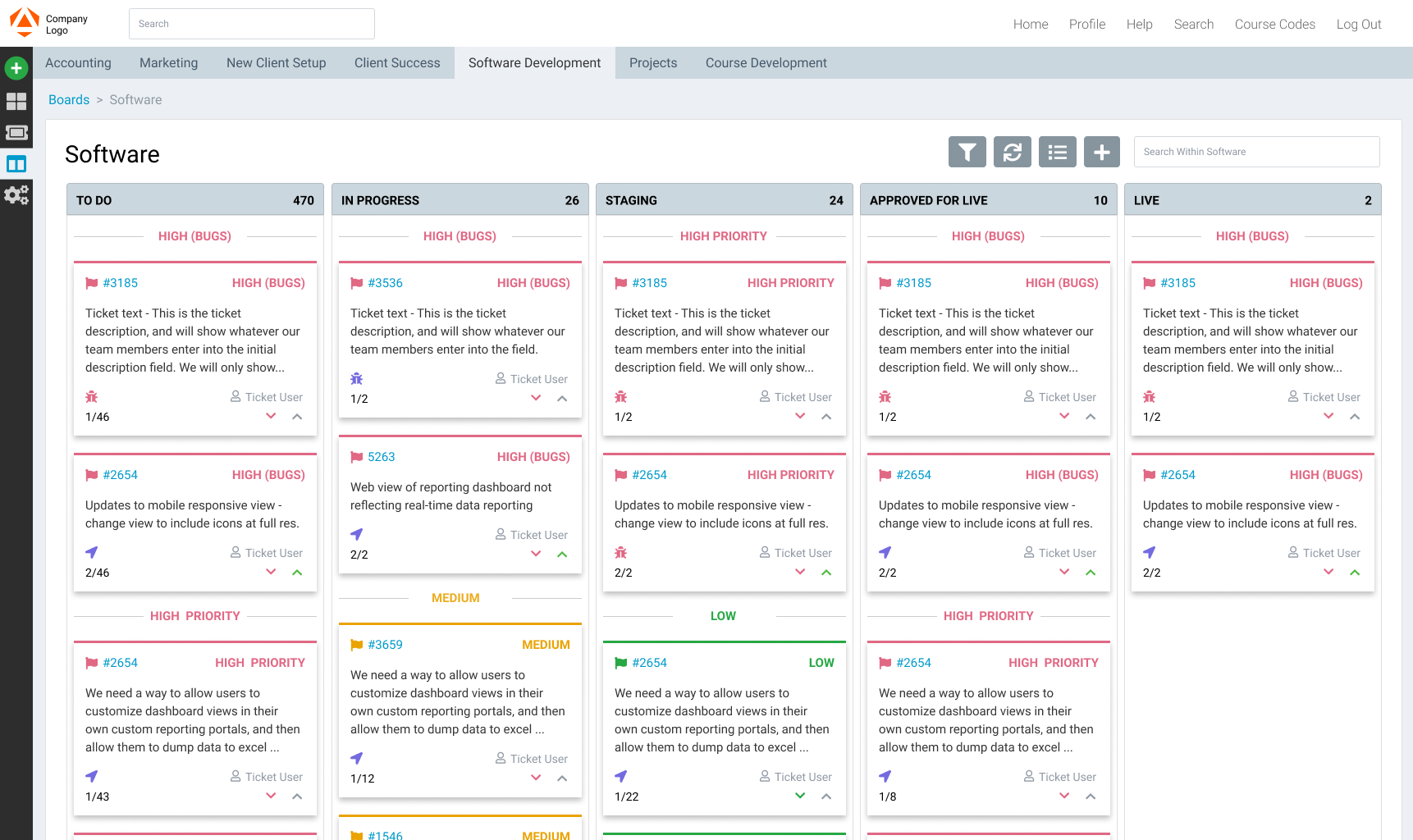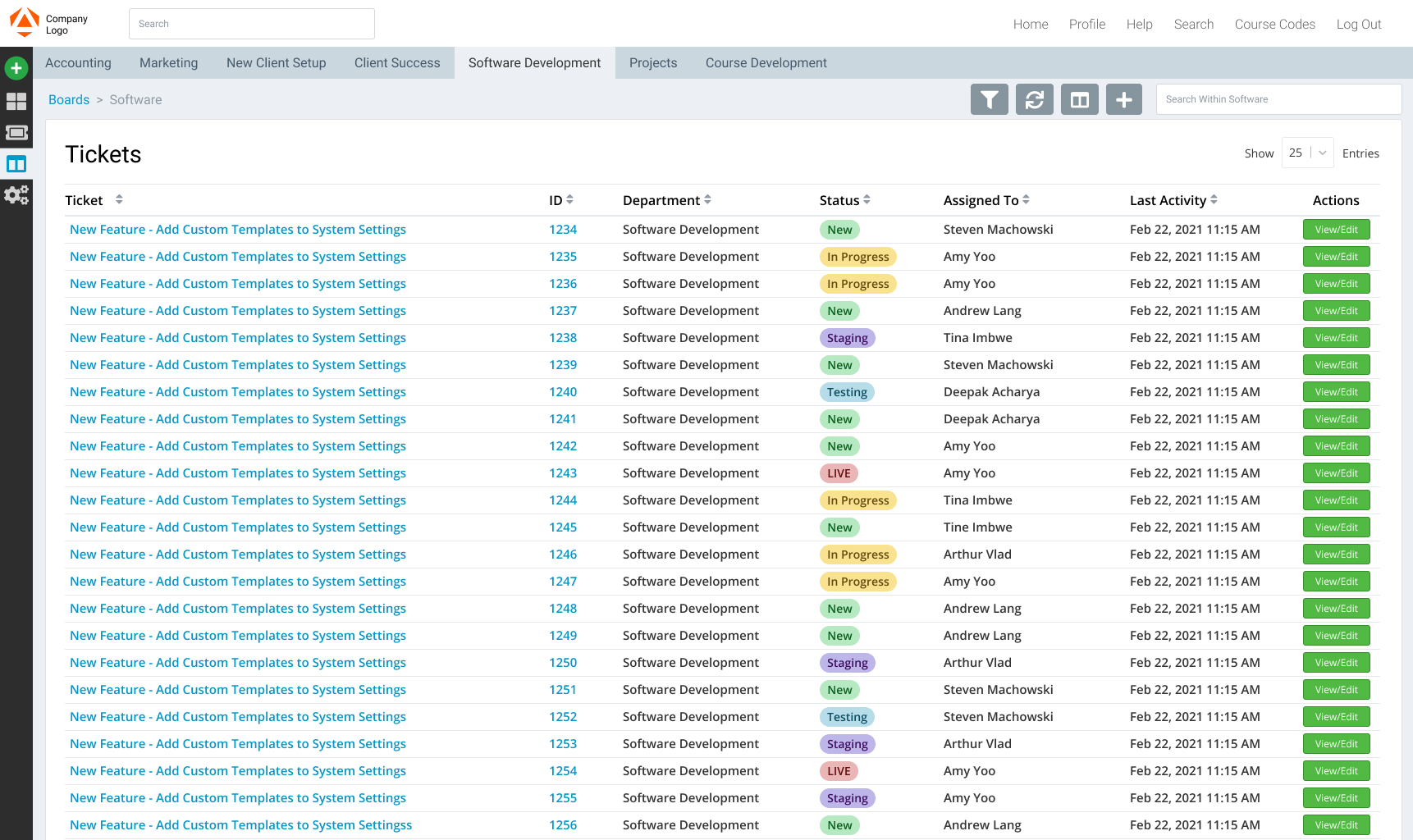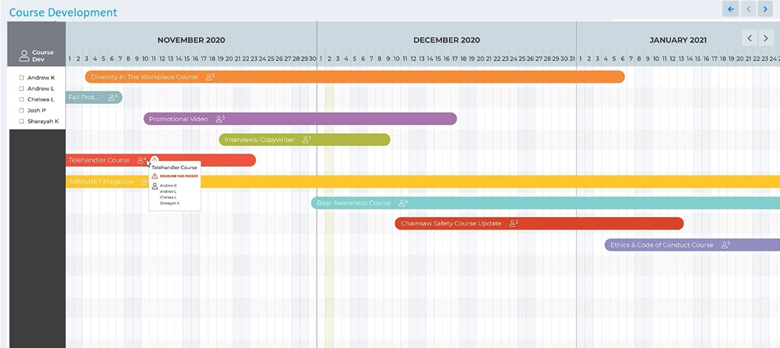Agile Development Tool
Project Management Software
BIS Safety Software
B2B/B2C, Enterprise, SaaS, Internal Agile Project Management Tool
Founded in 2006, BIS Safety Software’s goal is to simplify safety management in a way that lets companies focus more on growing their people than managing their training certificates. After working with many different third-party project management tools over the lifetime of the organization, the team recognized the need to create a streamlined and highly tailored internal tool to help manage the growing needs of the development team and other departments as well. The goal was to create a cohesive PM tool which would integrate across departments, cut out the bloat of third-party applications and even allow clients to view their own tickets and projects.
Role
Lead Product Designer
My role as Lead Product Designer on this project included quite a few hats, and the following responsibilities:
- Assist with evaluative and generative user research, including interviewing key stakeholders to deeply understand our users and their needs
- Contribute to ideation by sketching initial design wireframes and ideas
- Create web app prototypes and clickable wireframes used in user testing
- Conduct testing with end users (in this case internal team members) to gather feedback
- Produce detailed, pixel perfect final specs for product interface and interactions
- Interface with the engineers to ensure translation of design to code
- Create design system for use on future developments within the product
- Maintain a style guide to ensure uniformity in future developments
- Follow up and debrief with department leads to ensure the solution met our initial requirements
- Continue to maintain and iterate on the product and add new features as needed
I had the privilege of consulting with our department leads throughout the process to ensure we would meet their needs, and worked very closely with the PM, CTO, and lead engineers on this project. I was the only designer on this project, but had consulted with our user researcher, as well as other designers for feedback.
Problem Space
After completing several major system upgrades in the mainline BIStrainer product, the development team specifically came to us with a problem: how can we scale up our project management capabilities as we grow the team, and the product? Early research and feedback indicated that no one was particularly excited with the tools we were using – they were too bloated, too confusing, or lacked key features we saw as non-negotiable. As a result we were missing highly important tickets, losing valuable time running complex software, and counting on systems which were not reliable as they scaled. Nearly every department was frustrated, and ready for change.
The Solution
Not wanting to reinvent the wheel we spent several arduous weeks looking for replacement tools. We consulted with team members, asked what they were using currently (personally and professionally) and what they were trying to accomplish with the tools. We trialed as many as we could, and took notes on which had key features that departments had identified as must-haves. Some interesting trends appeared during this process, and we used the MoSCoW method to narrow down to a subset of requirements which was much smaller than initially discussed. With this information in mind, I set to work on a design which would truly help everyone automate workflows and notifications, and ultimately speed up their time spent on project management.
I created initial brainstorming sketches on a notepad and within a day was starting to work on a style guide, design library, and initial layouts for our swimlane view. Within 2 weeks we had a functioning protoype to run by the team for feedback, feasibility checks with engineers, and final approval by the stakeholders. The engineers were excited and we were able to dedicate a small subset team to the initial build and had it ready within a few months of final signoff on design.
Outcome
The team was thrilled with the product and to this day still get excited about using our project management tool. We have allowed clients to interact with any tickets they are tagged in which allows for greater transparency with our end users. Our sales team, client onboarding, accounting, marketing, course development, and design teams all use this centralized resource to send relevant tickets and data back and forth, and ultimately minimized our use of external software (and the associated fees). It is tied into our mainline product, and as such became a valuable asset to the business beyond the initial scope. It allows us to customize our PM tool as we need, and remain very agile.
Future updates will include a time logging tool for each ticket, to negate the need for an external time tracking software as we push to automate our accounting processes.





